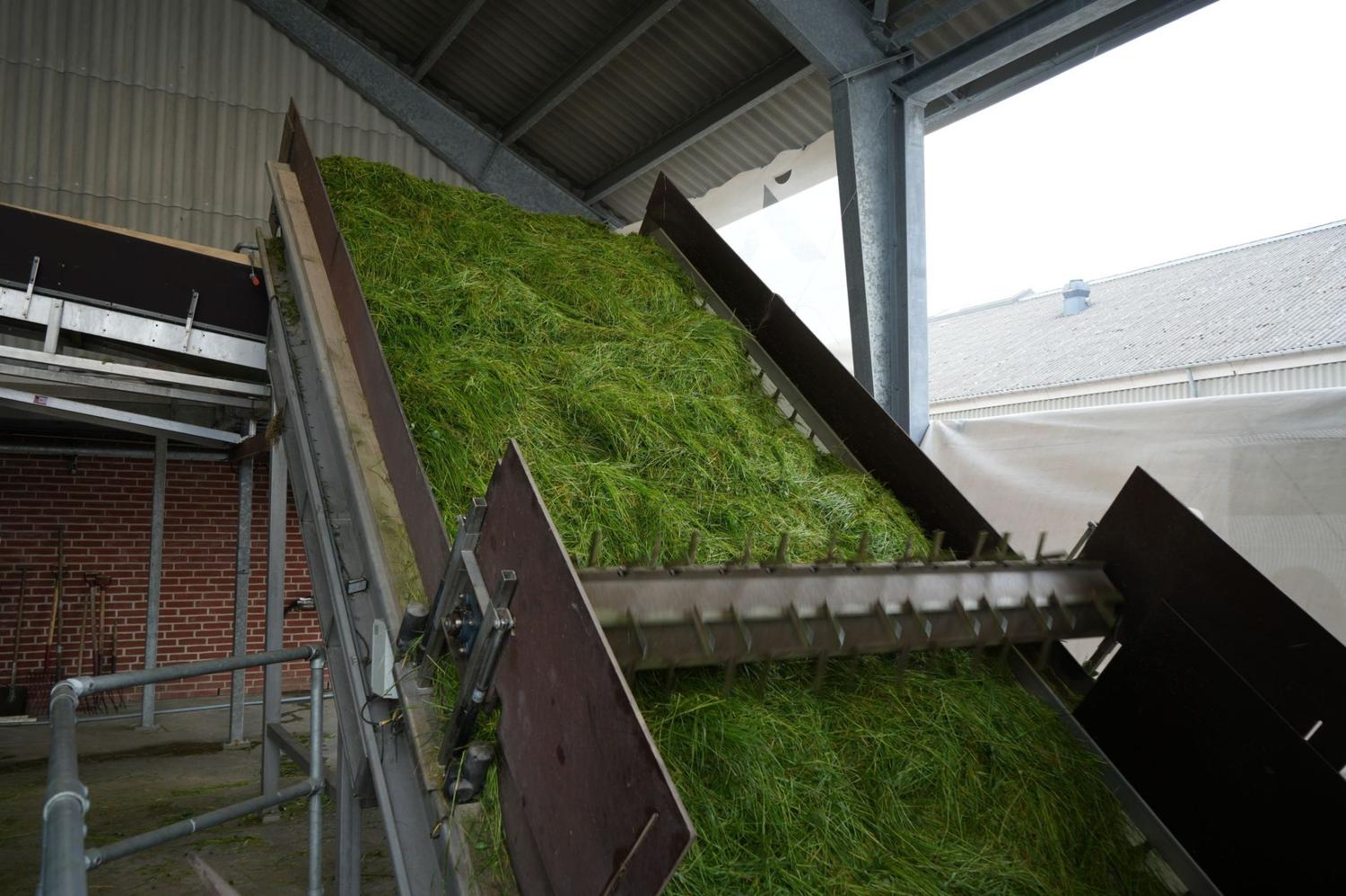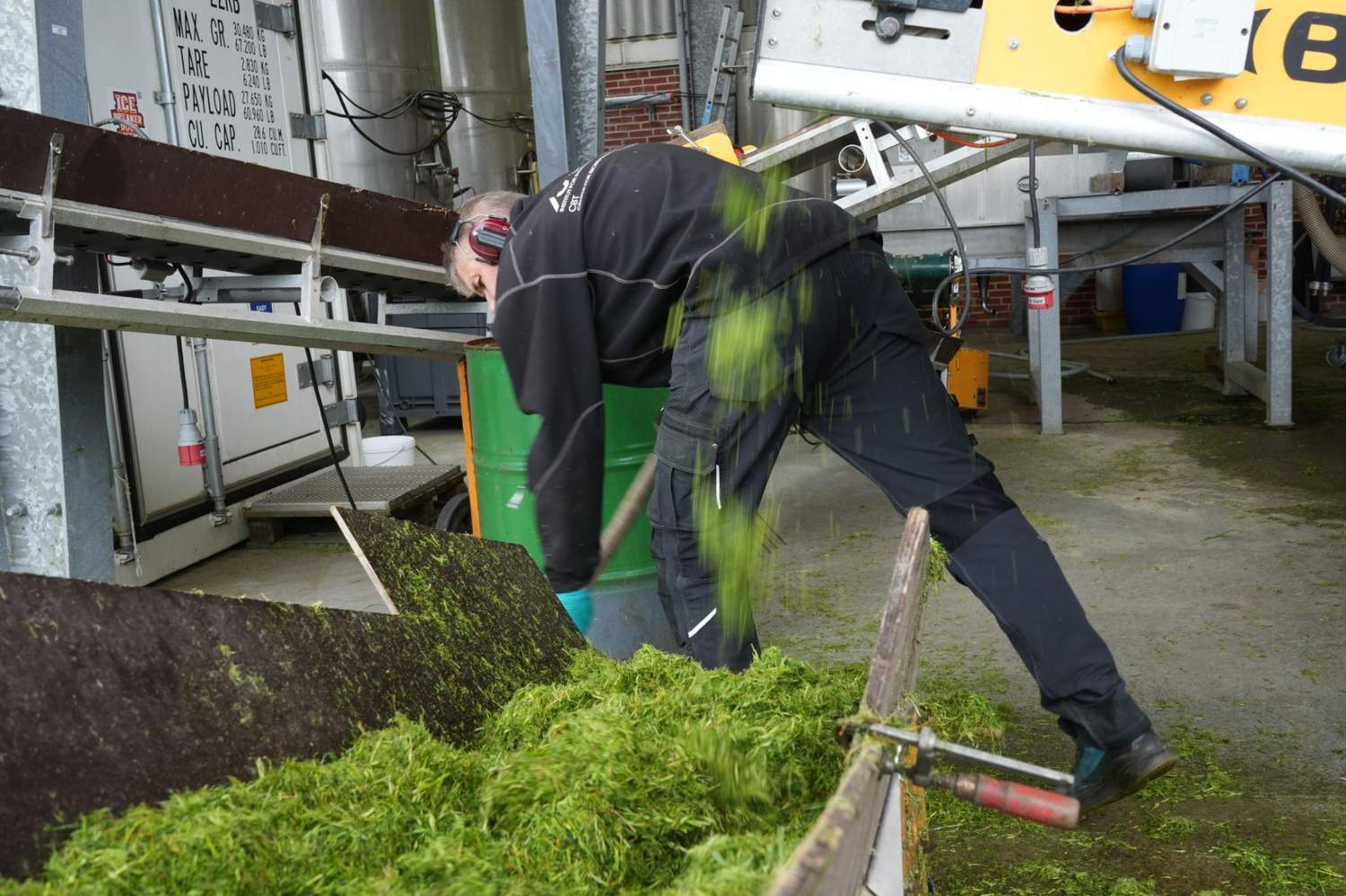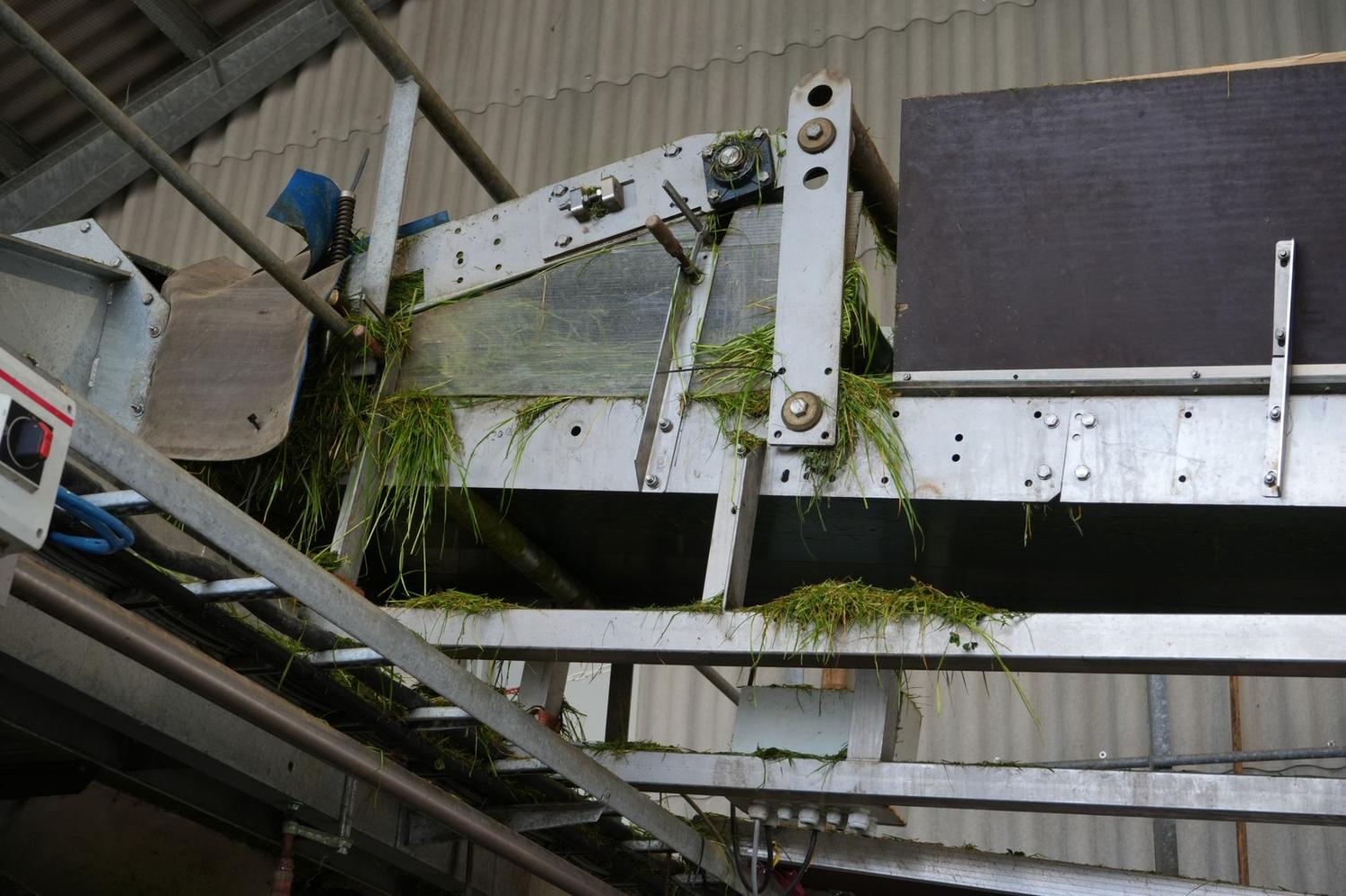Turning Grass into Opportunity: Inside Europe’s Farmer-Led Bioeconomy

Introduction: Growing More Than Grass
This week, we joined partners at the forefront of one of Europe’s most promising agricultural revolutions: the small-scale green biorefinery. Hosted by the Centre for Circular Bioeconomy at Aarhus University, this demonstration brought the promise of circular agriculture to life. It showed how Europe’s grasslands could help farmers reduce emissions, boost rural incomes, and produce vital inputs for food, packaging, and the bioeconomy.
As a proud partner in the EU-funded Rural BioReFarmeries project, ODOS is helping bring farm-based biorefineries to life. Our team, represented by Cian White and Lucas Laubenheimer, took part in the consortium tour at the Aarhus demo site.
What Is a Green Biorefinery, and Why Does It Matter?
Europe’s grasslands span more than 50 million hectares. Yet their potential in the circular bioeconomy has long been overlooked. The Rural BioReFarmeries project aims to change that. Its goal is ambitious: to transform rural economies by empowering farmers to produce both essential farm inputs like fertilisers and animal feed and new, high-value bio-based products. These small-scale biorefineries operate close to where the biomass is grown, cutting transport costs, lowering emissions, and simplifying logistics.
But what exactly is a green biorefinery? A green biorefinery processes fresh green biomass, such as grass and clover, into multiple high-value products. These include leaf protein for animal feed, fibres for sustainable packaging, and nutrient-rich liquids used in fertilisers, bioplastics, and natural flavourings.
During the demonstration in Denmark, part of the EU-funded Horizon Europe initiative Rural BioReFarmeries, we saw this process in action. Freshly harvested grass arrived at the demo platform and was mechanically separated into three key outputs:
- Leaf protein concentrate (LPC): A high-quality alternative to soy in animal feed, especially for pigs and poultry.
- Press cake fibre: A solid residue rich in cellulose, used to develop sustainable packaging and biodegradable materials.
- Juice fraction: A liquid packed with nutrients, now being explored for fertiliser production, flavour compounds, bioplastics, and volatile fatty acids (VFAs).
This cascading use of biomass ensures that every part of the plant is put to work, reducing waste and replacing imports with local, circular alternatives.

How the Project Creates Change
The project has a set and clear mission: to demonstrate a new green biorefinery model that works economically for farmers, supports the environment, and can be replicated across Europe. Its core objectives include:
- Developing a Smart Biomass Supply Chain (SBSC): Using digital technologies and ICT to improve logistics, ensuring high-quality biomass is delivered efficiently and with minimal emissions.
- Optimising decentralised green biorefinery systems: Proving that small-scale biorefineries can process green biomass into feed, fertiliser, and valuable ingredients and that multiple small units can supply larger central facilities when needed.
- Creating cascading value chains: Ensuring that every part of the grass biomass is used, from leaf protein to fibre to juice maximising farmer value while minimising waste.
- Testing new business models: Building and validating revenue-sharing systems that reward farmers at the gate, with a focus on creating high-value outputs like flavour compounds, antimicrobials, and biomaterials.
- Demonstrating climate-smart practices: Replacing imported materials, reducing food spoilage, producing local fertilisers and energy. All while evaluating the environmental and social benefits.
- Focusing on replication and policy integration: Sharing best practices through a new Rural Green Biorefinery Network, delivering training, and informing policy to support national and EU-wide adoption.
This is not a one-off innovation. It’s a system designed to scale sustainably, rooted in local realities and farmer participation.
Impact That Goes Beyond the Field
The potential impact of the Rural BioReFarmeries project is vast. Not just for agriculture, but for Europe’s economy, climate goals, and rural livelihoods. Here’s what the initiative is set to achieve:
- Empowering farmers as active players in value creation, enabling them to diversify income sources and increase on-farm profitability through new product streams.
- Boosting rural resilience by creating skilled jobs, expanding business models for primary producers, and providing tools for younger generations to see agriculture as a viable, modern livelihood.
- Enhancing EU competitiveness by building inclusive models that reduce reliance on imports and increase Europe’s autonomy in producing food, materials, and bio-based chemicals.
- Delivering measurable environmental benefits, including:
- A targeted 15% reduction in GHG emissions from dairy farms
- A 20% reduction in emissions from pig diets
- Boosting pollinator abundance and enabling better nutrient recirculation
- Significant reductions in land use and transport emissions
- Ensuring societal buy-in through social life cycle assessments, farmer engagement, and training, driving broad acceptance and adoption of biorefinery products and practices.
This is about building a bioeconomy that works at the farm gate, not just in policy papers.

A Farmer-Centric Model with Broad Benefits
For rural producers, biorefineries represent more than just an opportunity for sustainability. They offer a pathway to economic diversification and climate adaptation. By supplying grass to biorefineries and using the resulting products on their farms, farmers can:
- Reduce fertiliser costs with bio-based alternatives
- Replace imported soy with homegrown protein
- Use grass residues for sustainable packaging or energy
- Earn additional revenue streams through biomass supply agreements
Importantly, the project includes farmers in the design of business models, ensuring fair value distribution and real-world feasibility. It’s this commitment to farmer engagement that makes the initiative stand out.
ODOS’s Contribution: Making Impact Measurable
At ODOS, we believe innovation is only as powerful as your ability to track it. That’s why we’re proud to contribute to the Rural BioReFarmeries project by enabling farm-level data integration and carbon tracking.
Our role is to help transform sustainability action into measurable, auditable progress. With tools that pull in emissions data from field to factory, we allow project partners to:
- Monitor GHG reductions at the farm level
- Benchmark performance across regions
- Validate claims for insetting, funding, or compliance
- Support LCA and biodiversity evaluations to assess broader environmental impact
From tracking changes in feed-related emissions to assessing the benefits of decentralised fertiliser production, our platform ensures that every innovation is backed by data, ready for policy, procurement, or boardroom decision-making.
Why Now? A Convergence of Climate, Policy, and Innovation
The Rural BioReFarmeries project arrives at a moment when climate urgency, EU policy, and technological readiness are finally aligned.
The European Green Deal, Farm to Fork strategy, and CSRD reporting obligations are all pushing agriculture toward greater transparency, decarbonisation, and resilience. But change at this scale only works if it’s feasible at the farm level. That’s what this initiative proves: that sustainability doesn’t have to mean complexity and climate action can be grounded in real-world systems, built from the soil up.
The project’s future vision includes six regionally adaptable business models, workshops for farmer training, and the formation of a Rural Green Biorefinery Network to scale these successes across Europe. It also aims for a 25% revenue boost for participating farmers, thanks to new product streams and stronger biomass supply chains.
What We Saw in Aarhus
During our visit to Aarhus, we saw more than machines and fermentation tanks. We saw a system that works. From field to press to protein to product, the Danish demo site offered a living example of how farm-grown resources can be transformed into climate solutions, rural income, and EU-wide impact.
It was a reminder that grass isn’t just ground cover. It’s a bioeconomic asset.

Want to Turn Innovation into Action?
At ODOS, we’re building the digital infrastructure to make circular agriculture measurable, reportable, and scalable. From carbon tracking to biodiversity to regenerative practices. If you’re working to build the future of sustainable farming, we’d love to collaborate.
